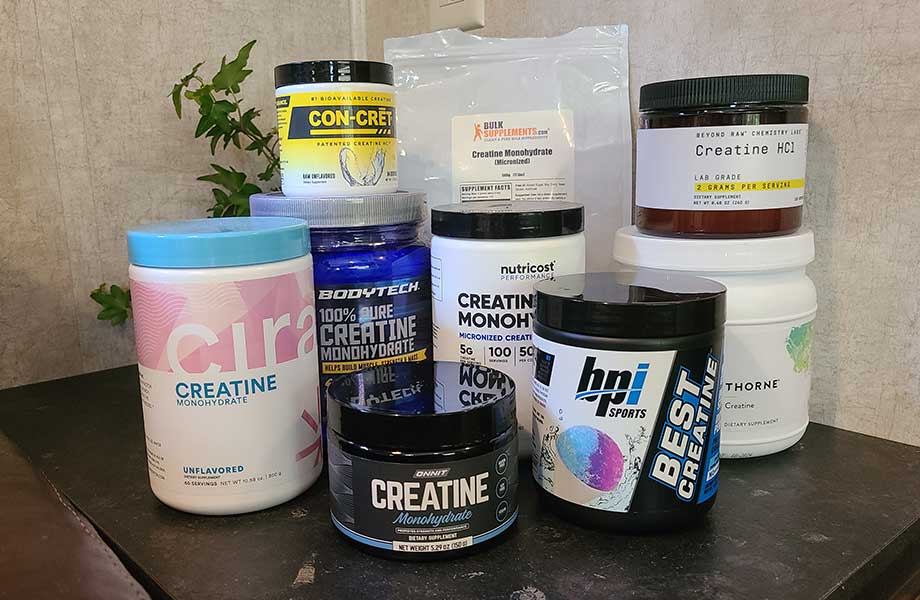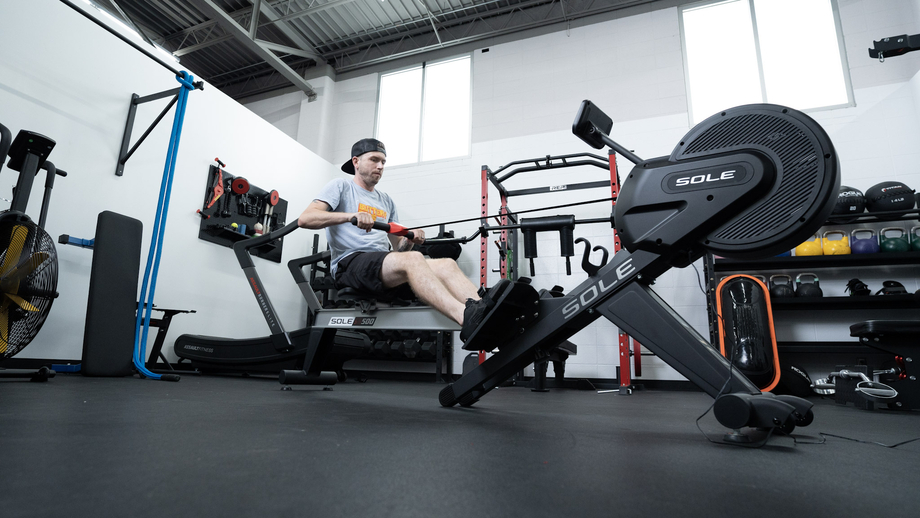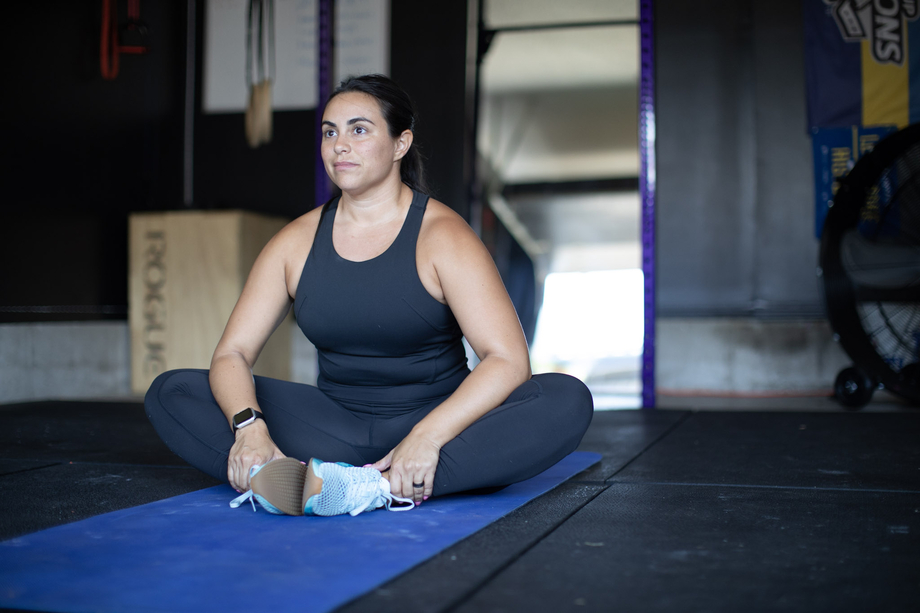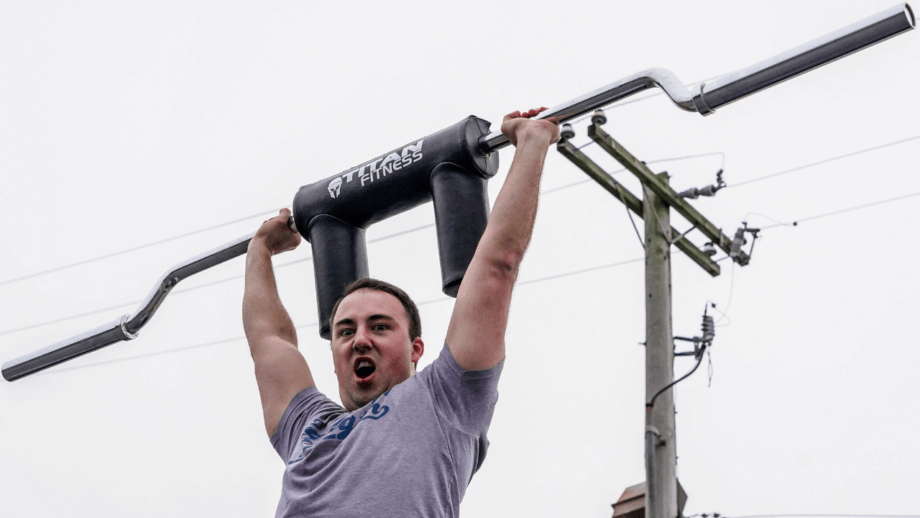The benefits of creatine supplementation—including improved sports performance and its ability to help build muscle—cannot be denied. If you’ve been researching these benefits and are wondering how to go about taking creatine, you may have come across the concept of creatine cycling.
But what is a creatine cycle? People have different tolerances to creatine, so there are several different viable methods of creatine supplementation you can try.
If you’ve ever heard of creatine loading, you’re already halfway familiar with cycling, which involves a scheduled creatine loading, maintenance phase, and then tapering off. However, is creatine cycling really worth the effort? Are there certain people who could benefit from it more than others? Here’s an in-depth explanation from a sports nutritionist.
Medical disclaimer: This article is intended for educational and informational purposes only. It is not intended as a substitute for medical advice. For health advice, contact a licensed healthcare provider.
What Is Creatine? What Does it Do?
Creatine is a naturally-occurring chemical produced by the body and acts as an energy source for your muscles. The body can produce creatine on its own via the liver, kidneys, and pancreas, but it can also be found in foods like red meat, seafood, and dairy. Athletes and lifters who rely on creatine supplements for increased training performance tend to take it in either its pill or powdered form.
What Is a Creatine Cycle?
The term “creatine cycle” refers to the tactic of supplementing with creatine by alternating different doses over a period of time. The idea is that this method will maximize muscle storage and, theoretically, enhance sports performance and muscle gain.
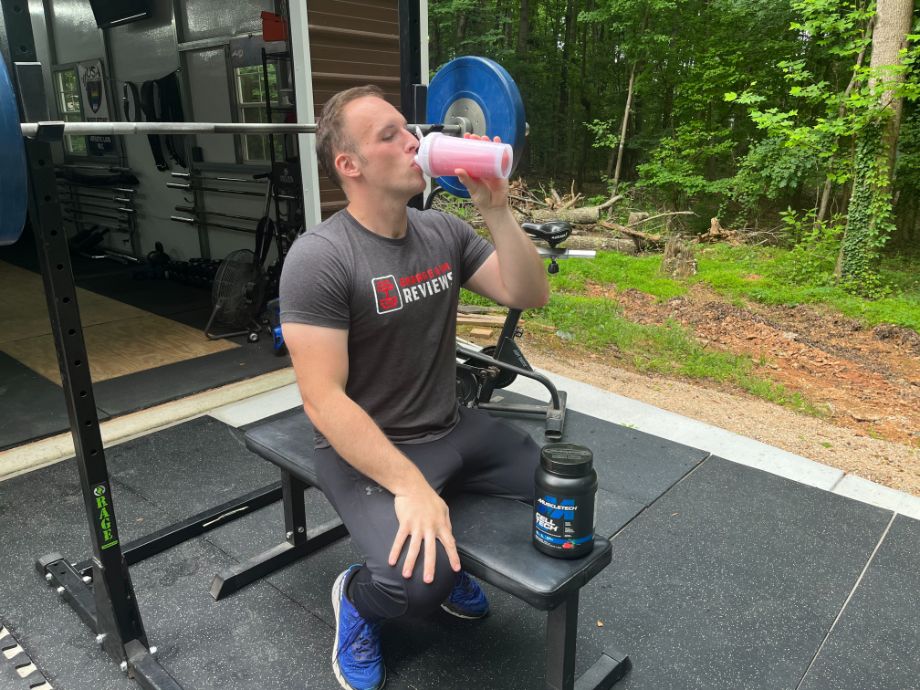
Normally, people take one daily serving of creatine for as long as they need to reach their goals. However, it is believed that, by changing up the dose every few weeks—or cycling—you can speed up and even enhance the benefits of creatine supplementation. Some experts even assert that if you do not cycle, your exercise performance benefits will drop off.
RELATED: Best Creatine Supplements
The science on creatine cycling is very limited, but if it is something you choose to try, you need to do it correctly to reduce the risk of side effects. A creatine cycle happens in three phases: loading, maintenance, and deloading, also called an “off” phase. Let’s take a look at each of them for the full picture.
- Loading phase: 2-4 weeks; 10-20 g, four 5 g servings throughout the day or two 10 g servings AM/PM
- Maintaining phase: 4-8 weeks; 5 g of creatine (recommended serving)
- Deloading phase: 2-4+ weeks; reduce to 1-3 g of creatine or discontinue completely
The Loading Phase
As part of the creatine loading phase, you will consume a very high amount of creatine monohydrate for maximum saturation in your muscle cells. When we say a high amount of creatine, we mean like “20 grams of creatine each day” high. For those who are used to taking the typical daily dose of 5 grams, this may sound scary.
However, to minimize the overwhelm (mainly of your digestive tract), it’s recommended that you break it up throughout the day as high doses can cause intestinal distress. The safest method is to take four of those 5-gram servings for five to seven days. You can also take 10 grams in the morning or 10 grams at night. Test your individual tolerance between the two methods to see what works best for you.
RELATED: When is the Best Time to Take Creatine?
This method has been supported by science to be effective at boosting sports performance1 for athletes in the short term, such as 30 days or less. Thus, it can be a practical tactic for athletes who are preparing for a competition.
If you’re looking for long-term creatine supplementation to support muscle gains or other performance benefits for months and months, this method hasn’t been shown to provide an additional benefit.
The Maintenance Phase
After the loading phase is complete, it’s time to cut down to the maintenance dose of creatine, which is 5 grams. This is the “normal” amount of creatine to take and has been shown to be the optimal dose2 to take to see the benefits of creatine.

Now the idea here is that, you’ve achieved saturation of muscle creatine in the loading phase, now you can maintain those creatine levels with the maintenance dose. The maintenance phase is the longest phase of the cycle, as it’s required for you to take this maintenance dose for a minimum of one month and a maximum of two months. If you have a lot of muscle mass or have done this cycle before, it may be better to stay in the maintenance phase for the maximum duration.
The Deloading or Off Phase
This phase is thanks to the experts (or gym bros, depending on who you ask) who insist that your body gets “used” to the effects of creatine after a while. They claim that a deloading phase is necessary to “de-condition” your skeletal muscle from the creatine monohydrate so that, when you go back on the cycle, the amount of creatine stores will be even more profound.
RELATED: Should I Take Creatine on Rest Days?
To do this, after your maintenance phase is over, you want to stop taking creatine completely. Some who deloads from creatine will just reduce their intake to 1 to 3 grams per day.
Either way folks, the research is mixed on if this method makes creatine supplementation more effective later on or that not doing an off phase is wasteful.
If anything, deloading can be helpful if you’re worried about creatine side effects or if creatine doesn’t agree with your stomach. At the very least, it may just be nice to take a break from the sports nutrition supplement.If you feel like your benefits have plateaued after continuous use, it’s totally fine to try deloading and pick back up later.
Benefits of Creatine
Creatine has several proven benefits when it comes to performance.
Aids in Building Skeletal Muscle
Many studies have demonstrated creatine’s ability to support muscle growth, which is exactly why creatine use is so popular. Protein synthesis, however, varies greatly depending on genetics, training experience, fitness level, diet, and exercise regimen. Be aware that, in the initial stages of supplementation, especially if you are going through a loading phase, much of this weight gain will be bloating from water retention.
RELATED: Does Creatine Make You Gain Weight?
Helps Boost Power Output
By increasing creatine stores in the muscle in the form of phosphocreatine, creatine can help to synthesize adenosine triphosphate, or ATP. ATP is the body’s source of energy and, by supplementing with creatine monohydrate, one can make more of adenosine triphosphate available which can delay fatigue while lifting weights4.
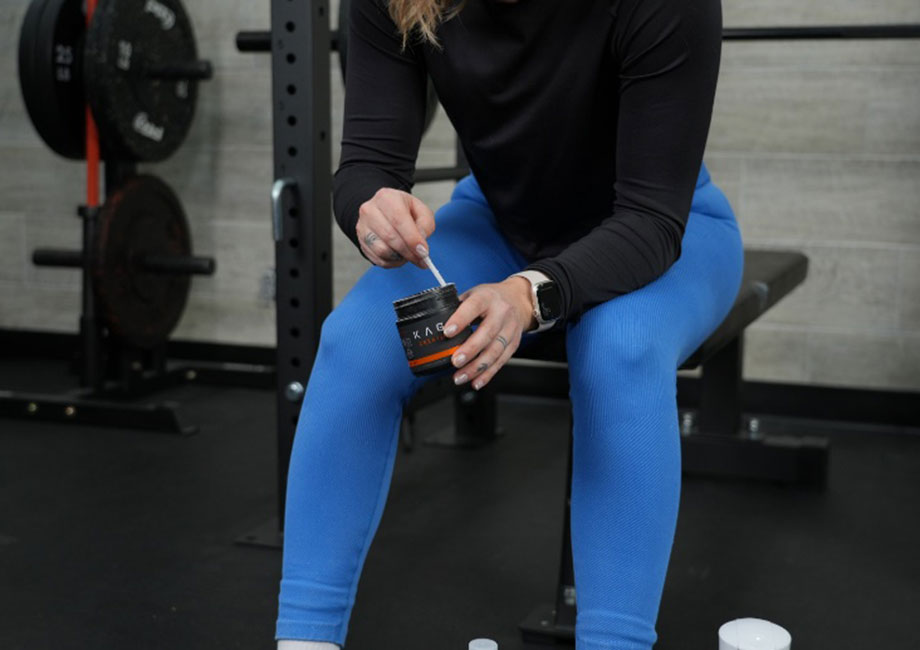
One recent study showed that athletes who had a consistent creatine intake experienced a 4 to 7% increase in peak power output5 which suggests to us that creatine works to improve speed and power. Though this study was done with sprinting, similar findings have been seen in similar activities involving high-intensity exercise.
May Prevent Muscle Breakdown
Due to creatine’s ability to attenuate muscular damage by providing ATP, creatine intake could be useful during injury or immobility to preserve muscle gain. When otherwise healthy, active individuals are immobilized for long periods of time, creatine supplementation has been shown to preserve muscle strength and mass1.
Do I Need to Creatine Cycle?
No, there is no evidence to support that creatine cycling is a better method of long-term creatine supplementation than the traditional way of taking it. However, there may be some instances where it couldn’t hurt:
- If you’re an athlete who needs to benefit from a short-term boost in sports performance
- You’re worried about your body adjusting to continuous supplementation
- You want a break from creatine and would like a scheduled time to come off of it
- You just feel better about your supplementation regimen when on a cycle
All in all though, creatine is not like steroids, which do drastically reduce your lean muscle mass and exercise performance when you come off of them. It’s important to know that your body can produce its own creatine from amino acids you eat. So, when you come off creatine, as long as you maintain your resistance training regimen, you won’t lose your gains in lean muscle mass.
RELATED: Is Creatine a Steroid?
Does Creatine Cycling Increase Strength?
The research we have on creatine cycling is very limited. However, one small study3 had 20 participants participate in a creatine cycle with the loading phase lasting five days and a maintenance phase of six weeks using 2 grams as the maintenance dose.
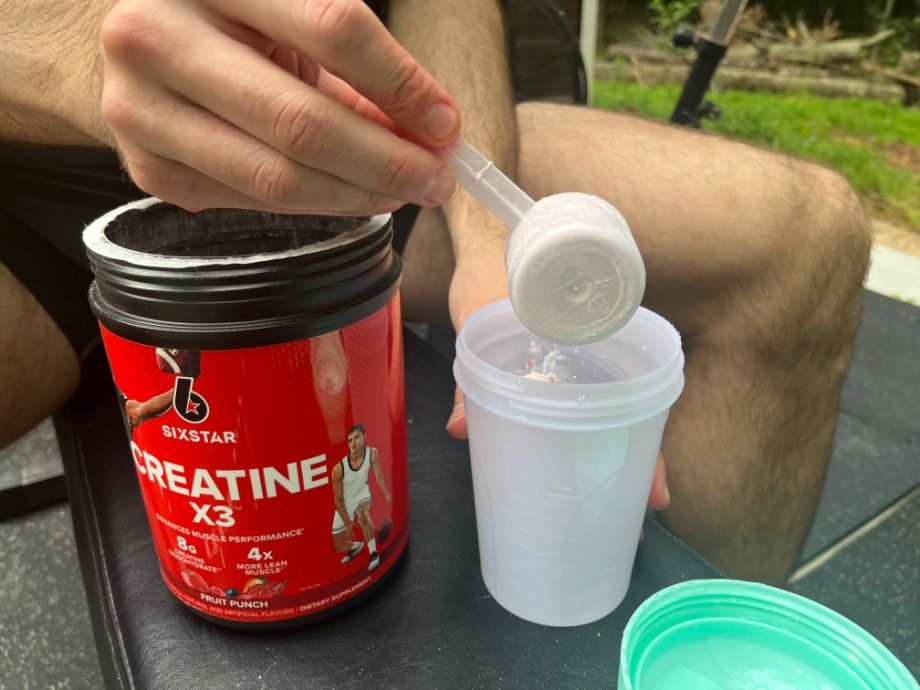
While the study found that the creatine loading phase did cause weight gain, it was noted that most of this was bloating and there were no differences seen in exercise performance, recovery, or power between cycling creatine and supplementing long-term.
RELATED: Does Creatine Make You Bloated?
Creatine Cycle: Final Thoughts
To put it bluntly, studies have shown that creatine cycling is largely unnecessary6 as it appears that you can get the same benefits from strength training as you would without cycling. However, some instances, such as athletes who need the short-term benefits of creatine supplementation or just people who prefer to switch up their supplement regimen, it can’t hurt.
Luckily, creatine is one of those dietary supplements that is easy to take, affordable, and flexible. It’s effective when taken either pre-workout or post-workout, whether you’re into bodybuilding or just casually lifting weights, and has minimal side effects. So, you can really take it in the manner that works best for you, as long as you’re getting the recommended dose of 5 grams daily.
Creatine monohydrate seems to be the most practical form of creatine to take. It also may work more optimally when taken with a carbohydrate-rich meal. The Journal of the International Society of Sports Nutrition7 conducted a study whose results suggest that taking creatine with a carbohydrate source can enhance creatine uptake in the muscle cells.
If you really want to build muscle, creatine use is just part of the equation. You also need a solid strength training regimen, consistency with your exercise and dietary supplements, and a balanced diet.
Creatine Cycle: FAQs
How long should you cycle on creatine?
A creatine cycle can take anywhere from six weeks to three months depending on the person and their goals.
Are you supposed to cycle creatine?
No, not necessarily. If you engage in high-intensity exercise, you can still benefit from creatine even without a cycle.
What is a healthy creatine cycle?
A healthy creatine cycle usually comes in three phases, adheres to safe and controlled dosing, and is implemented in combination with a healthy diet and resistance training program.
What happens when you cycle off creatine?
When you cycle off creatine you will not lose all of your muscle growth and muscle strength, that’s for sure—creatine isn’t necessary for either, although it can help. You may notice improvements in any creatine-related digestive issues you were experiencing as well.
These statements have not been evaluated by the Food and Drug Administration. This product is not intended to diagnose, treat, cure, or prevent any diseases.
References
- Antonio J, Candow DG, Forbes SC, et al. Common questions and misconceptions about creatine supplementation: what does the scientific evidence really show?. J Int Soc Sports Nutr. 2021;18(1):13. Published 2021 Feb 8. doi:10.1186/s12970-021-00412-w
- Naderi A, de Oliveira EP, Ziegenfuss TN, Willems MT. Timing, Optimal Dose and Intake Duration of Dietary Supplements with Evidence-Based Use in Sports Nutrition. J Exerc Nutrition Biochem. 2016;20(4):1-12. doi:10.20463/jenb.2016.0031
- van Loon LJ, Oosterlaar AM, Hartgens F, Hesselink MK, Snow RJ, Wagenmakers AJ. Effects of creatine loading and prolonged creatine supplementation on body composition, fuel selection, sprint and endurance performance in humans. Clin Sci (Lond). 2003;104(2):153-162. doi:10.1042/CS20020159
- Moraes Rd, Van Bavel D, Moraes BS, Tibiriçá E. Effects of dietary creatine supplementation on systemic microvascular density and reactivity in healthy young adults. Nutr J. 2014;13(1):115. Published 2014 Dec 15. doi:10.1186/1475-2891-13-115
- Bogdanis GC, Nevill ME, Aphamis G, et al. Effects of Oral Creatine Supplementation on Power Output during Repeated Treadmill Sprinting. Nutrients. 2022;14(6):1140. Published 2022 Mar 8. doi:10.3390/nu14061140
- Hultman E, Söderlund K, Timmons JA, Cederblad G, Greenhaff PL. Muscle creatine loading in men. J Appl Physiol (1985). 1996;81(1):232-237. doi:10.1152/jappl.1996.81.1.232
Kreider RB, Kalman DS, Antonio J, et al. International Society of Sports Nutrition position stand: safety and efficacy of creatine supplementation in exercise, sport, and medicine. J Int Soc Sports Nutr. 2017;14:18. Published 2017 Jun 13. doi:10.1186/s12970-017-0173-z


